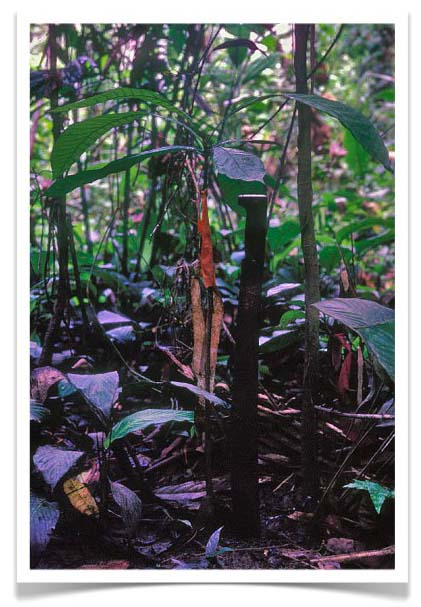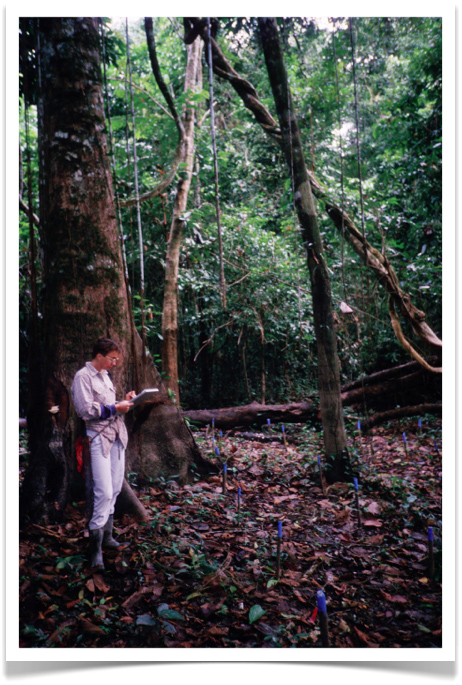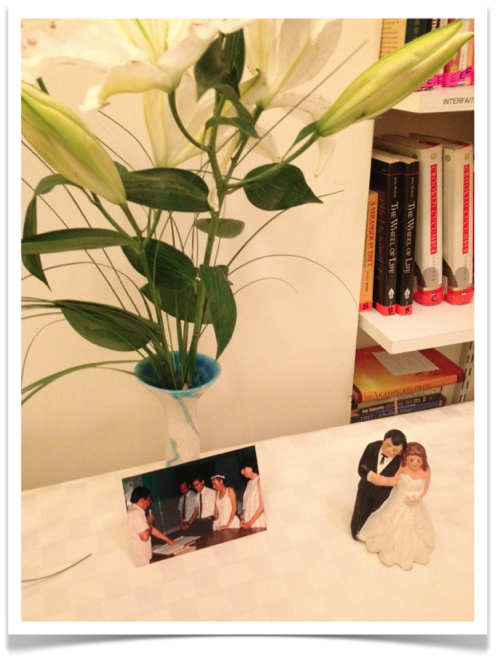The Importance of Looking Down (From the Archive)
 Tuesday, April 21, 2015 at 1:15PM
Tuesday, April 21, 2015 at 1:15PM 
I am a firm believer in the idea that if you want to understand the future of a tropical forest - look in the understory (see Regeneration Surveys). Repeated observations of marked seedlings are the crystal ball (maybe Ouija Board is a better analogy) of forest dynamics. A species may be represented by a large number of canopy trees at the moment, but if it doesn't have any seedlings or saplings established in the understory, it's days are numbered. Want to assess the sustainability of forest use? Count seedlings. Want to make imperceptible, lasting changes to forest composition? Selectively weed the understory (see Tembawang).
When you walk through a tropical forest, the natural tendency is to look up. To scan the crowns for flowers and fruits (if collecting herbarium specimens) or to marvel at the size of the canopy trees (see Size Matters). Nothing wrong with this, but there may be more to be learned by looking down. [NOTE: The sapling with the orange flagging is Grias peruviana (see Grias Predated, Umberto Pacaya, and Varzea Still Life); I still have that machete].
 Grias peruviana,
Grias peruviana,  Peruvian Amazon,
Peruvian Amazon,  seedling mortality in
seedling mortality in  Science | |
Science | |  Email Article |
Email Article |  Print Article
Print Article 












